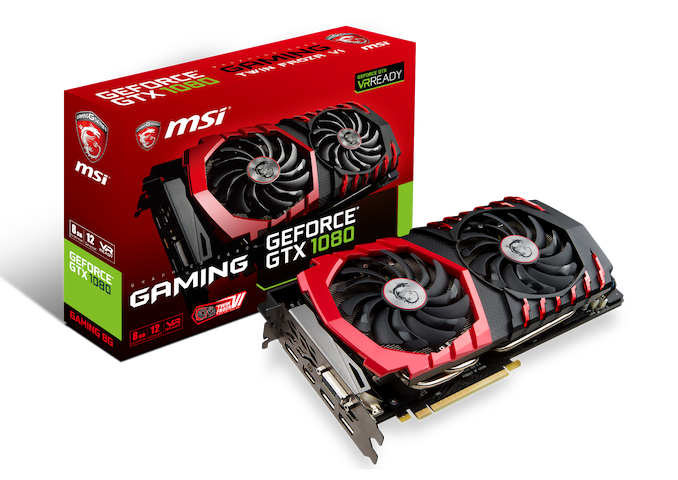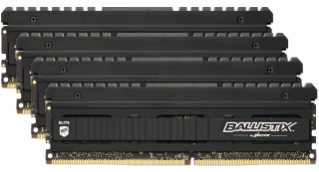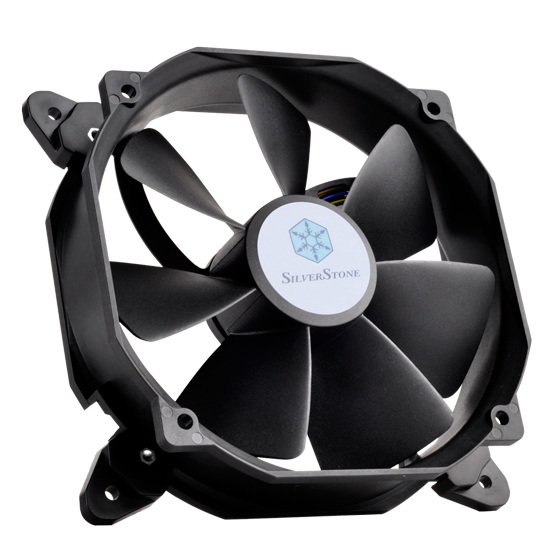The GIGABYTE MZ31-AR0 Motherboard Review: EPYC with Dual 10G
by Gavin Bonshor on March 25, 2020 1:15 PM ESTBoard Features
The GIGABYTE MZ31-AR0 has an impressive array of features which stretches across the entirety of the board. Rev 1.x is designed for AMD's EPYC 7001 (Naples) family of processors, whereas Rev 2.x can use AMD's EPYC 7002 Rome CPUs.
This motherboard doesn't use a chipset as such, it relies on the processor installed into the board. Some of the boards premium features include support for up to sixteen SATA drives, with four SlimSAS ports each enabling use for four SATA devices per cable. A solitary PCIe 3.0 M.2 slot is located next to the SlimSAS, although users looking to install more PCIe 3.0 NVMe could opt for a PCIe slot to M.2 adapter. Dominating the majority of the lower half of the board is seven PCIe 3.0 slots which operate at x8/x16/x16/x16/x8/x16. Opting for a larger E-ATX form factor has allowed GIGABYTE to include sixteen memory slots with support for DDR4-2666 LRDIMM and RDIMM up to a maximum capacity of 2 TB.
| GIGABYTE MZ31-AR0 E-ATX Motherboard | |||
| Warranty Period | 3 Years | ||
| Product Page | Link | ||
| Price | $565 | ||
| Size | EATX | ||
| CPU Interface | LGA 4094/SP3 | ||
| Chipset | SoC | ||
| Memory Slots (DDR4) | Sixteen DDR4 Supporting 2TB ECC LRDIMM/RDIMM Octa Channel Up to DDR4-2666 |
||
| Video Outputs | 1 x D-Sub (Aspeed) | ||
| Network Connectivity | Broadcom BCM 57810S Dual SFP+ 10 G 1 x GbE (Aspeed) |
||
| Onboard Audio | N/A | ||
| PCIe Slots for Graphics (from CPU) | 7 x PCIe 3.0 x16 x8/x16/x8/x16/x16/x8/x16) |
||
| PCIe Slots for Other (from PCH) | N/A | ||
| Onboard SATA | Sixteen (4 x SlimSAS) | ||
| Onboard M.2 | 1 x PCIe 3.0 x4/SATA | ||
| Onboard U.2 | N/A | ||
| USB 3.1 (10 Gbps) | N/A | ||
| USB 3.0 (5 Gbps) | 2 x Type-A Rear Panel 1 x Header (two ports) |
||
| USB 2.0 | 2 x Type-A Rear Panel 1 x Header (two ports) |
||
| Power Connectors | 1 x 24-pin ATX 2 x 8pin CPU |
||
| Fan Headers | 2 x CPU (4-pin) 5 x System (4-pin) |
||
| IO Panel | 2 x USB 3.1 Gen1 Type-A 2 x USB 2.0 Type-A 2 x SFP+ 10 G (Broadcom) 1 x D-Sub (BMC) 1 x Serial Port 1 x MLAN (Aspeed) 1 x ID Button |
||
Some of GIGABYTEs controller choices are interesting with a dual SPF+ 10 G ports on the rear powered by a Broadcom BCM 57810S Ethernet controller. A total of four USB Type-A ports are located on the rear of the board consisting of two USB 3.1 G1 and two USB 2.0 ports, while a USB 3.1 G1 and USB 2.0 front panel header offers an extra two ports per header. Also on the rear panel is a serial port, a D-sub video output provided by the Aspeed AST2500 BMC, which also includes a single Gigabit Ethernet port for remote access. As the GIGABYTE MZ31-AR0 isn't designed for the consumer market, the board has no on-board audio codec. It does, however, have a total of seven 4-pin fan headers with two dedicated for a CPU cooler, and five for chassis fans.
Test Bed
As per our testing policy, we take a high-end CPU suitable for the motherboard that was released during the socket’s initial launch, and equip the system with a suitable amount of memory running at the processor maximum supported frequency. This is also typically run at JEDEC subtimings where possible. It is noted that some users are not keen on this policy, stating that sometimes the maximum supported frequency is quite low, or faster memory is available at a similar price, or that the JEDEC speeds can be prohibitive for performance. While these comments make sense, ultimately very few users apply memory profiles (either XMP or other) as they require interaction with the BIOS, and most users will fall back on JEDEC supported speeds - this includes home users as well as industry who might want to shave off a cent or two from the cost or stay within the margins set by the manufacturer. Where possible, we will extend out testing to include faster memory modules either at the same time as the review or a later date.
For direct comparisons with consumer boards, we're using a 16-core processor.
| Test Setup | |||
| Processor | AMD EPYC 7351P 180W, $774 16 Cores, 32 Threads, 2.4 GHz (2.9 GHz Turbo) |
||
| Motherboard | GIGABYTE MZ31-AR0 | ||
| Cooling | Noctua U14S TR4-SP3 | ||
| Power Supply | Thermaltake Toughpower Grand 1200W Gold PSU | ||
| Memory | 8x32 GB SK Hynix DDR4-2933 21-21-21 Ran at DDR4-2666 |
||
| Video Card | MSI GeForce GTX 1080 Gaming X 8G (1683/1822 Boost) | ||
| Hard Drive | Crucial MX300 1TB | ||
| Case | Open Test Bed | ||
| Operating System | Windows 10 64-bit 1909 | ||
Readers of our motherboard review section will have noted the trend in modern motherboards to implement a form of MultiCore Enhancement / Acceleration / Turbo (read our report here) on their motherboards. This does several things, including better benchmark results at stock settings (not entirely needed if overclocking is an end-user goal) at the expense of heat and temperature. It also gives, in essence, an automatic overclock which may be against what the user wants. Our testing methodology is ‘out-of-the-box’, with the latest public BIOS installed and XMP enabled, and thus subject to the whims of this feature. It is ultimately up to the motherboard manufacturer to take this risk – and manufacturers taking risks in the setup is something they do on every product (think C-state settings, USB priority, DPC Latency / monitoring priority, overriding memory sub-timings at JEDEC). Processor speed change is part of that risk, and ultimately if no overclocking is planned, some motherboards will affect how fast that shiny new processor goes and can be an important factor in the system build.
Many thanks to...
We must thank the following companies for kindly providing hardware for our multiple test beds. Some of this hardware is not in this test bed specifically, but is used in other testing.


















37 Comments
View All Comments
sonny73n - Wednesday, March 25, 2020 - link
Wow, two Gigabyte motherboards reviews in a week!?I have to find something else to read.
demu - Wednesday, March 25, 2020 - link
You should also test ASRock Rack ROMED8-2T.It supports 7x PCIe Gen4 x16 expansion slots, 2TB of DDR4 3200 (with 256GB LRDIMMs), 2x10GB ethernet ports etc.
And the memory slots don't block long PCIe cards.
https://www.asrockrack.com/general/productdetail.a...
p1esk - Wednesday, March 25, 2020 - link
Now this is a board I want for my next 4xGPU deep learning workstation. Though EPYC cpus suck frequency wise (when compared to equivalent core count TRs). Basically it comes down to whether I want a good memory bandwidth (8 channels vs 4 channels), and whether I want the full 16 lanes per GPU for all four GPUs. Serious trade-off. Why can't they put a pcie switch into a TR board (I'm talking about ASRock TRX40 Creator)?Deicidium369 - Sunday, April 12, 2020 - link
LOL that's cute you think there is so much traffic to those GPUs that you not only need PCIe4 - but 16 lanes per. Pretty sure your "4xGPU deep learning workstation" is a theoretical purchase, and will not materialize in any way shape or form. You could put those on 8 lane PCIe3 and get the same results. Moar Corez Moar Lanez No Cluez. Keep dreamingSlash3 - Wednesday, March 25, 2020 - link
It's not yet available at retail (soon™), but it should be an absolute beast of a board.Ktracho - Friday, March 27, 2020 - link
This article doesn't sufficiently highlight the impact of the memory slots interfering with the PCIe slots. This severely limits the use cases for this motherboard. Someone mentioned using this board in a storage server, but I doubt such a system needs the bandwidth that Gen. 4 slots provide. I think Gigabyte would have been able to increase their market by going with a design similar to ASRock's, which has 1 DIMM slot per memory channel. This would have allowed the use of multiple accelerator boards, which can make use of the bandwidth the Gen. 4 slots provide. I get the impression that Gigabyte's designs are geared toward specific customers.On the positive side, as far as I can tell, this board has been the only Gen. 4 motherboard on the market that supports EPYC CPUs, which to me is surprising given how long it's been since EPYC CPUs were announced.
phoenix_rizzen - Saturday, March 28, 2020 - link
There are no Gen 4 slots on this motherboard. It's all PCIe 3.Ktracho - Monday, March 30, 2020 - link
My bad. I got confused with the MZ32-AR0, with which I have personal experience. It looks very similar, but it has PCIe Gen. 4 slots, all of which, except for one, are also obstructed by DIMM slots.paulinus - Saturday, March 28, 2020 - link
Omg, *almost* perfect motherboard for my upgrade.Is there anything similar, but with sTR3/threadripper?
Seriously, with all that bandwith, noone has truly workstation board, without wifi, but with 1-2 10g ports integrated, and more than 3 usable slots...
I need tr board, with 10g, and layout supporting 3slot gpu (7slots or lets say, in xlatx manner, last slot with 16lanes), two pcie ssd (intel Pseries, not m2), one slot with bifurbication for 2-4 m2 slots card, maybe sound card, and one free slot, or even two, for second (2slot) gpu, 25gb+ lan, or another monster ssd.
I can get it for intel cpus easily, but i *really* want to leave that swamp for amd
ballsystemlord - Wednesday, March 25, 2020 - link
@Gavin will a threadripper CPU work in an EPYC motherboard?I'm just curious. I did search online. Thanks!